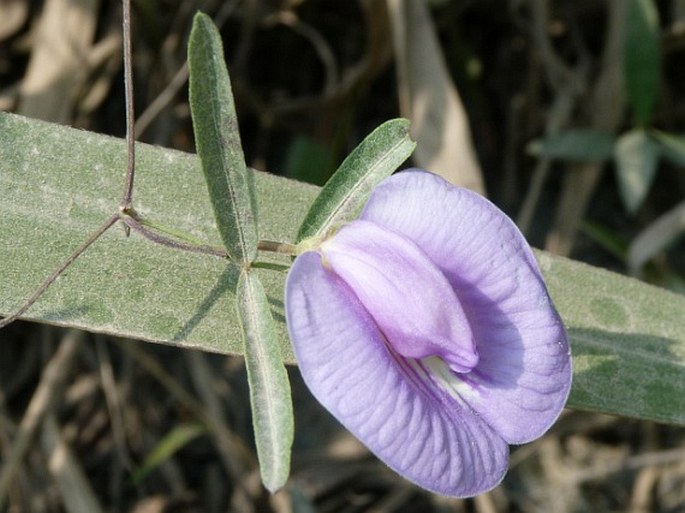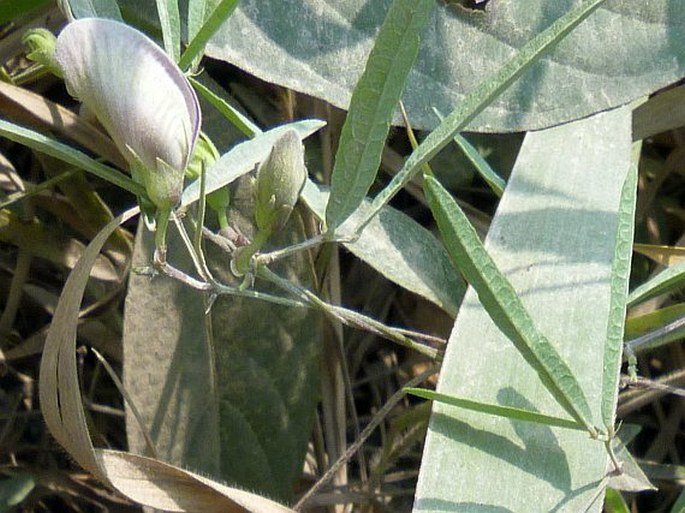Syn.: Bradburya angustifolia (Kunth) Kuntze, Centrosema brasilianum var. angustifolium (Benth.) Amshoff, comb. illeg., Clitoria angustifolia Kunth
Family: Fabaceae Lindl.

Distribution: Central America (from Belize to Panama), the northern part of South America (from Colombia to Suriname), Brazil (Amazônia, Caatinga, Cerrado, Mata Atlântica) and Bolivia (Santa Cruz).
Ecology: It grows in grassy places, in savannas and shrubby habitats, up to elevations of about 1200 m asl.

Description: Small perennial vine with glabrous or slightly pilose stem. Leaves petiolate, leaflets 3, linear to oblong-linear, 3–5 cm long and 5–9 mm wide, rounded or slightly cordate at the base, obtuse at the apex, mucronulate. Flowers solitary, slender-pedicellate; bracts ovate, striate; calyx campanulate, up to 10 mm long, lobes unequal, corolla blue to purple, 2.5–3 cm long, the keel scarcely shorter than the wings. The fruit is a legume, 7–10 cm long and 3–4 mm wide, glabrous.



These images were taken in Guatemala, Lanquin (by Jindřiška Vančurová, February 11, 2015).


